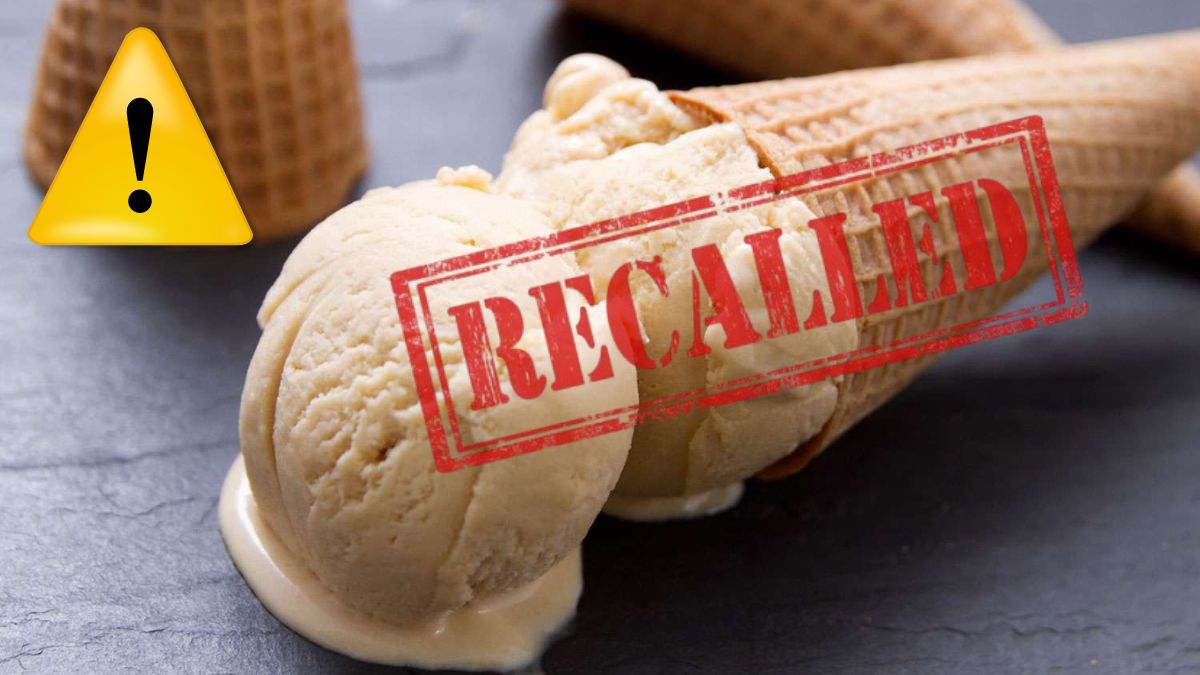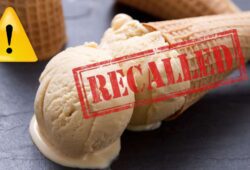
The U.S. Food and Drug Administration (FDA) has announced the recall of over 100,000 ice cream bars that may be contaminated with a harmful bacteria posing a serious health risk to consumers. Here’s which ice cream products have been pulled from the market and where they were sold.
Which Ice Cream Bars Were Recalled?
According to the FDA, the recalled products were produced by Rich’s Ice Cream. The recall, classified as a Class II, includes batches numbered from 24351 to 25156, totaling 110,292 bars. The affected products are:
- Chocolate Crunch Cake Bars
- Strawberry Shortcake Bars, Rich Bars
- Crumbled Cookie Bars
- Orange Cream Bars
- Fudge Frenzy Bars
- Cotton Candy Twirl Bars
- Savagely Sour Blue Raspberry Bars
- Savagely Sour Cherry Bars
- Cool Watermelon Bars
ALSO READ Kilwins will give away free ice cream for a year! Here’s how you can win it
Why Were Rich’s Ice Cream Bars Recalled?
The recalled ice cream bars may be contaminated with Listeria monocytogenes, a bacterium that can lead to serious health complications and, in severe cases, death.
Where Were the Recalled Rich’s Ice Cream Bars Sold?
The affected products were distributed across 23 U.S. states:
- Arizona
- Alabama
- Ohio
- California
- Pennsylvania
- Georgia
- New York
- New Jersey
- Florida
- Texas
- Virginia
- Illinois
- Missouri
- Massachusetts
- Tennessee
- Iowa
- South Carolina
- Oregon
- Oklahoma
- Nevada
- Louisiana
- Wisconsin
- Nebraska
What Should I Do If I Purchased the Recalled Ice Cream?
If you bought any of the affected ice cream bars, you are advised to contact Rich Ice Cream Co. for guidance on next steps and possible refunds or replacements.
What Is a Class II Recall?
The FDA classifies product recalls into three categories based on the potential risk they pose to consumers:
- Class I Recall: This is the most serious type. It occurs when there is a reasonable probability that the use of or exposure to the violating product will cause serious adverse health consequences or death.
- Class II Recall: This applies to situations where the use of or exposure to the product may cause temporary or medically reversible adverse health effects, or where the probability of serious adverse health consequences is remote.
- Class III Recall: This classification is used when the use of or exposure to the product is not likely to cause adverse health consequences.
What is listeria?
Listeria monocytogenes is a bacterium responsible for an infection that can be very serious or even fatal. This condition particularly affects young children, the elderly, pregnant women, and those with weakened immune systems.
ALSO READ Actor Malcolm-Jamal Warner dies: Cause of death and net worth
Symptoms of listeria
Listeria infection may include the following symptoms, typically appearing within a month:
- Fever
- Muscle aches
- Fatigue
- Headache
- Stiff neck
- Loss of balance
- Seizures
- Confusion
In pregnant women, it can lead to miscarriages or stillbirth.
How dangerous is listeria?
Listeria infection can affect various organs, including the brain, spinal cord membranes, and the circulatory system.
How is listeria transmitted?
The bacterium are widespread in the environment, present in both water and soil. Infected animals can also act as carriers and sources of transmission.
Listeria can be transmitted in the following ways:
- Consumption of unpasteurized milk or contaminated vegetables.
- Transmission from mother to fetus in the womb or directly to the fetus during childbirth.
- Through sexual contact.
- Through inhalation of the organism.
How to prevent listeria?
Since this microorganism is widespread in the environment, the most effective protection is to follow basic hygiene practices. This includes consuming only pasteurized dairy products, ensuring meats are well cooked, and properly washing hands before preparing food.
It is also recommended that pregnant women and individuals with weakened immune systems avoid consuming these foods, along with soft cheeses and raw deli meats.
What Foods Cause Listeria?
Some foods that can cause a listeria infection include:
- Dairy products made with unpasteurized milk
- Cold cuts and processed meats (such as sausages, hams, and pâtés)
- Smoked fish, such as salmon









